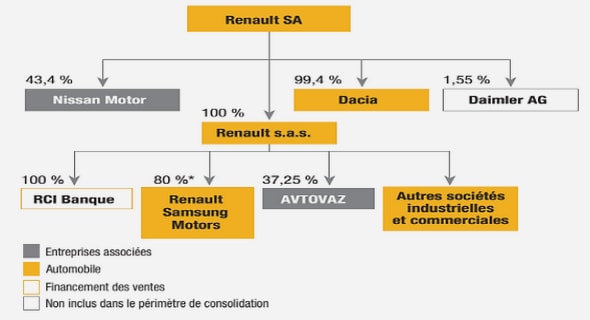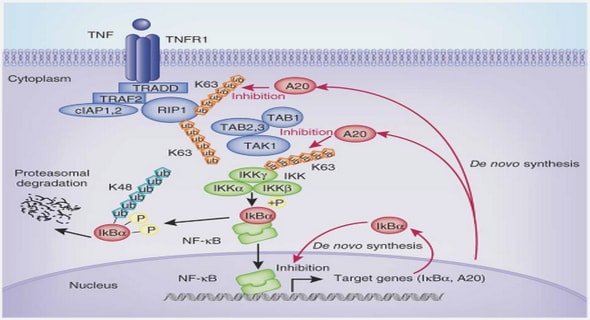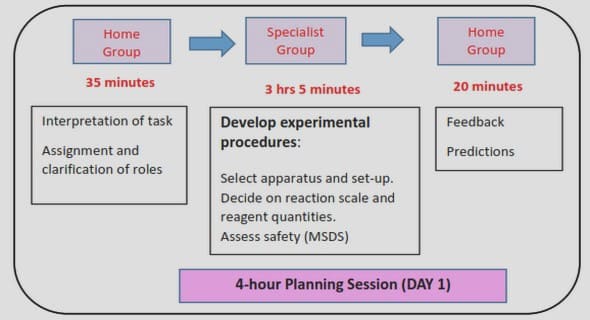Get Complete Project Material File(s) Now! »
Karstification process in carbonate aquifers
The specificity of karst systems is that the structure is formed by the flow itself due to carbonate rocks solubility. Those rocks are marked by low primary porosity (intergranular) and high secondary porosity (the presence of fissures and fractures), which improve their hydrodynamic properties. Moreover, groundwater circulation causes an increase of secondary porosity (fissures) by the progressive dissolution of carbonates.
This process is called Karstification. In this way, slow percolation of water in fissures induces a deeper karst development, being limited to the hydraulic potential and its relation with vertical hydraulic conductivity (Bakalowicz, 1977; Ford & Williams, 1989; Milanovic, 2004).
The combined effect of the dissolution capacity of water and groundwater flow is the driving force of the karstification. Thus, dissolution of carbonated rocks by dissolved CO2 is a key phenomenon in karstification. Rainwater becomes acid by dissolution of CO2 through the atmosphere (global mean pCO2: 0,038 %) (Ford & Williams, 1989) and of biogenic CO2 after its infiltration in soil (its concentration is about one hundred time more important than the atmospheric one). Consequently, partial pressure of CO2 (pCO2) is normally controlled by soil horizons on the recharge zones (Drever, 1997). At equilibrium, carbon dioxide concentration is proportional to pCO2 in the gas phase. Once dissolved, carbon dioxide becomes carbonic acid (H2CO3),which forms ions H+, HCO3 – (ion bicarbonate) and carbonate (CO3 2-) when dissociated. The balance of this dissociation depends on the pH of the solution (Figure 2) (Drever, 1982). The molar fraction of each species also depends on the pH of the solution. On GW with a pH of about 7, H2CO3 and HCO3 – are predominant and CO3 2- are insignificant (Appelo & Postma, 2005).
Carbonate dissolution system can be used to show the relations between the three phases: gaseousliquid- solid; when they are in contact long enough, the reversible reactions reach equilibrium. Nevertheless, equilibrium between water and carbonate rocks is a long process and can take months to be reached, depending on pCO2 (which can be reached in a few minutes or a few hours), but also on the solid phase and on the type of prevailing water circulation (Bakalowicz, 1994; Gonfiantini & Zuppi, 2003).
Geochemical tracers of karstic transfers
Hydrochemical characteristics of groundwaters result from water-rock interactions determined by aquifer lithology and residence time within the system, water circulation conditions, anthropogenic influence and hydrological conditions. Many authors investigate relations between hydrogeochemical processes and karst physical characteristics (Bakalowicz, 1994; Vaute et al., 1997; Petelet et al., 1998; Perrin et al., 2003a; Perrin et al., 2003b; Barbieri et al., 2005). Temporal variations observed in groundwater chemistry are usually related to the aquifer physical characteristics and carbonate permeability, and help to identify hydrodynamic behaviour. Physicochemical and hydrochemical parameters are increasingly used to obtain information about aquifer reactivity, vulnerability and water transfer processes, thus contributing to the development of hydrodynamic conceptual models. Natural tracing approach can be extremely useful in the assessment of groundwater-surface water interactions, water dating, quantification of water-rock interactions and evaluation of water resource vulnerability (Emblanch et al., 1998; Katz et al., 1998; Nativ et al., 1999; Batiot et al., 2003b; Pulido- Leboeuf et al., 2003; Négrel & Petelet-Giraud, 2005; Hébrard et al., 2006; Adinolfi Falcone et al., 2008; Bouchaou et al., 2008; Silva-Filho et al., 2009).
Geological and hydrogeological settings
The Lez spring is a Vaucluse-type spring, i.e. with a main conduit developed below the spring level, and is located on a major regional fault. This spring (65m a.s.l.) is the source of the Lez River that flows over 28 km to the Mediterranean Sea. This river has three main tributaries fed by temporary karst springs belonging to the Lez karst system.
The Lez spring is one of the main karst springs in France and is located 15 km north of Montpellier (France). It used to be a perennial spring; however, since 1982 water has been directly withdrawn from the main conduit to supply Montpellier and its metropolitan region with water. The pumping rate sometimes exceeds the natural water discharge in order to secure water supply throughout the year. Consequently, during low-water period, the spring dries up. Ecological water discharge at the Lez River is ensured during this period by a partial deviation of the pumped water to the river.
The Lez karst system discharges also at several seasonal outlets: Lirou, Restinclières, Fleurettes and Gour Noir (Figure 3). The Lez spring is the main perennial outlet of the system, with groundwater discharge that can reach about 15 m3/s during rainfall events, with an annual average discharge of 2,2 m3/s. Lirou is a temporary spring that flows only 4 months in a year. Fleurettes is the most ephemeral spring, flowing only a few weeks a year. Restinclières spring was perennial before the pumping, and according to recent field observations, it seems it remains a perennial spring despite the water exploitation.
Table of contents :
Abstract
Résumé
Résumé étendu en français
Table of Contents
List of Tables
List of Illustrations
Introduction
Chapter 1 – State of the art: Karst systems and groundwater geochemical tracers
1.1 – Karst structure
1.2 – Karstification process in carbonate aquifers
1.3 – Geochemical tracers of karstic transfers
1.3.1 – Water-rock interaction tracers
1.3.2 – Anthropogenic and recharge infiltration water tracers
1.3.3 – Isotopes
Chapter 2 – Material and methods
2.1 – Geological and hydrogeological settings
2.2 – Water exploitation of the Lez spring
2.3 – Hydrological settings: Mediterranean Climate
2.4 – Strategy of study and data acquisition
2.4.1 – Continuous monitoring and sampling
2.4.2 – Analytical methods
2.5 – Hydrodynamic behaviour of the Lez karst system
Chapter 3 – Application of the hydrochemistry to understand the functioning of a karst system
3.1 – Introduction
3.2 – Results
3.2.1 – The Lez spring behaviour during flood events
3.2.2 – Characterization of the different groundwater types flowing at the Lez spring
3.3 – Discussion
3.3.1 – Water-rock interactions: assessing deep waters end-member
3.3.2 – Surficial waters end-member and its implications on aquifer vulnerability
3.4 – Conclusion
Chapter 4 – Better constraining the chemical evolution of waters in a complex Mediterranean karst system b isotopical study combined with hydrogeochemistry
4.1 – Introduction
4.2 – Results and discussion
4.2.1 – Springs correlation using major and trace elements
4.2.2 – Study of seasonal recharge by using water stable isotopes
4.2.3 – Reactions controlling water chemistry
4.2.4 – Hydrograph deconvolution using various tracers
4.3 – Conclusion: Conceptual model for groundwater circulation at the Lez karst system
Chapter 5 – Groundwater hydrochemistry changes induced at the Lez karst spring as a result of intense
5.1 – Introduction
5.2 – Results and interpretation
5.2.1 – Lez typical autumn floods: 1973, 2008 and 2009
5.3 – Chemical changing description using Discriminant Factorial Analysis
5.4 – Conceptual model of a possible hydrodynamical change before and after pumping
5.5 – Conclusion
Conclusion


